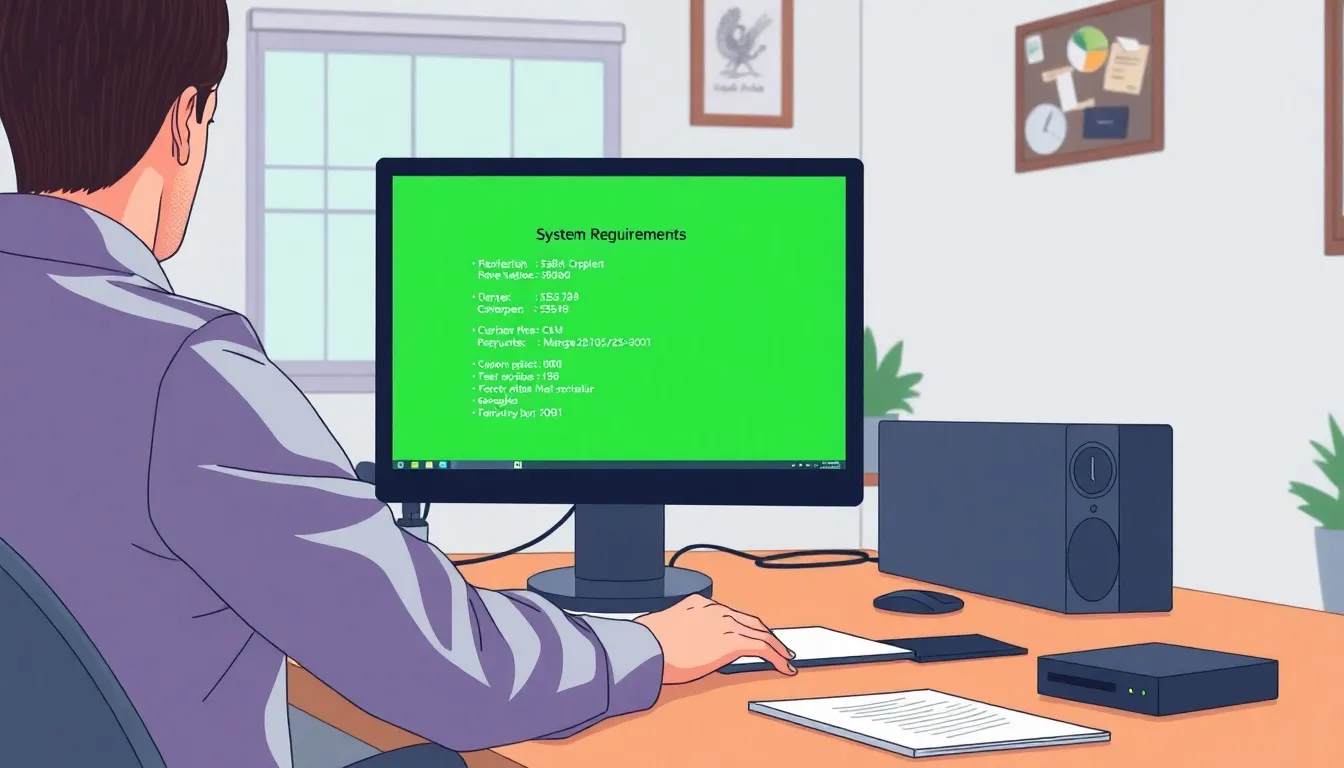Updating software can feel like a chore, but it doesn’t have to be a drag. When it comes to Endbugflow, keeping things fresh is essential for top-notch performance. After all, who wants to deal with pesky bugs when they could be zipping through tasks like a pro?
Table of Contents
Togglehow to update endbugflow software on pc
Endbugflow software plays a vital role in enhancing the workflow efficiency of users. Designed for bug tracking and project management, this tool enables teams to identify issues quickly. Its user-friendly interface supports seamless navigation, which simplifies the tracking process. Users can customize their dashboards, allowing for tailored views of ongoing projects.
Compatibility with various operating systems makes Endbugflow accessible to a broader audience. Regular updates improve functionality, introduce new features, and address security vulnerabilities. Operating on the latest version ensures that users access the most effective tools available. Benefits include enhanced reporting capabilities and better integration with other productivity software.
Collaboration features facilitate communication among team members. Users can assign tasks to specific individuals and track their progress in real-time. Notifications keep everyone informed of changes or updates, which enhances overall project visibility. Stakeholders benefit from increased transparency, allowing for timely decision-making.
In addition to real-time collaboration, analytics tools provide insights into team performance. These metrics allow teams to optimize their workflows and identify areas for improvement. Utilizing data-driven decisions leads to more effective project management. Adopting Endbugflow helps organizations streamline their processes.
Understanding software updates and utilizing new features significantly impacts performance. Keeping the software current promotes stability and efficiency across all projects. Users should prioritize regularly checking for updates to ensure they always operate within the best framework available. Embracing the latest version of Endbugflow allows teams to focus on achieving their goals without unnecessary interruptions.
Preparing for the Update

Preparing for the update of Endbugflow involves key steps to ensure a seamless process. Prioritizing these steps enhances the effectiveness of the software.
Checking System Requirements
Verifying the system requirements is essential before proceeding with the update. Confirm that the PC meets the minimum specifications recommended by Endbugflow. Depending on the version, these specifications might include operating system versions such as Windows 10 or later. Ensure sufficient available storage space for the update, typically recommended at least 2 GB. Check for necessary hardware capabilities, including RAM and processor speed, to maximize functionality. Reviewing compatibility with other installed software can reduce potential conflicts during the update process.
Backing Up Current Data
Backing up current data must occur prior to beginning the update process. Users should collect essential project files, settings, and configurations to prevent loss. Utilize built-in backup tools within Endbugflow or external storage solutions to save this data. Engaging cloud storage options can provide additional security. Keeping a recent backup simplifies restoring previous setups if the update encounters issues. Establishing a regular backup routine can enhance data security and streamline future updates.
Step-by-Step Update Process
Updating Endbugflow software involves a straightforward process to ensure users benefit from the latest features and enhancements.
Downloading the Latest Version
Users locate the official Endbugflow website to access the most recent version. Navigating to the download section, they should select the appropriate operating system. Clicking the download button initiates the process, and they must wait for the file to complete downloading. Once the download finishes, checking the file size ensures a complete download before proceeding. This verification step avoids potential issues during the installation phase.
Installing the Update
To begin installation, users find the downloaded file and double-click it. Following on-screen prompts is essential for a smooth installation experience. Users should accept the license agreement when prompted. Selecting the installation directory can personalize the setup according to their preferences. After setting parameters, clicking “Install” starts the process, and users should await completion before launching the software.
Verifying the Installation
After installation, opening Endbugflow confirms the update’s success. Users look for the version number in the settings menu to ensure it matches the latest release. Familiarizing themselves with any new features or changes enhances the overall user experience. Running a test project can verify functionality and confirm that the software operates correctly. Remaining vigilant for bugs or issues during initial use helps maintain smooth workflow efficiency.
Troubleshooting Common Issues
Updating Endbugflow can occasionally lead to unexpected challenges. Recognizing how to address these common issues ensures a smooth experience.
Error Messages During Update
Users may encounter various error messages while attempting to update the software. Specific messages may indicate compatibility problems with the operating system or insufficient storage space. Ensuring the PC meets system requirements often resolves these issues. Users can check for disk space by navigating to system settings. Restarting the update process might also help clear temporary glitches. If problems persist, consulting the official Endbugflow support website provides additional guidance specific to error codes.
Rollback Instructions
Rolling back to a previous version becomes essential if the new update introduces significant issues. First, users should access the Backup and Restore settings from the control panel. They can select the option to restore the system to an earlier date if a restoration point exists. Undoing the update often involves uninstalling the new version via the Programs and Features menu. Users should then reinstall the previous version from a backup or the official website. Regularly maintaining system backups allows for easier reversion in the future.
Wind-up
Updating Endbugflow software is vital for maintaining high performance and security. By following the outlined steps users can ensure a smooth update process that minimizes disruptions. Regular updates not only enhance functionality but also improve collaboration and reporting features, allowing teams to work more efficiently.
Staying proactive with updates helps prevent potential issues and keeps projects running smoothly. With the right preparation and troubleshooting strategies in place users can confidently navigate the update process and fully leverage Endbugflow’s capabilities. Embracing these practices will ultimately lead to a more productive and streamlined workflow.





